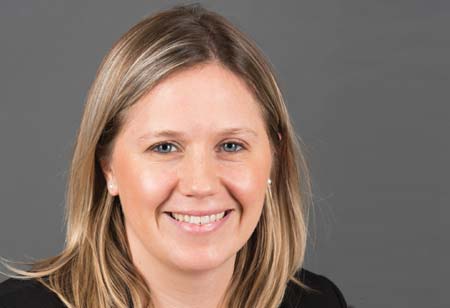Thank you for Subscribing to Healthcare Business Review Weekly Brief

Prioritizing Access to Dental Care: Challenges and Solutions for the Future
Healthcare Business Review
Please Briefly Describe Your Journey and Current Roles and Responsibilities at Boston Children’s Hospital.
I have been employed at Boston Children’s for approximately 16 years, beginning my journey on the inpatient side. I have also worked in research and emergency departments before returning to the inpatient side as a manager. Six years ago, I joined the dental practice, marking my first experience in an ambulatory clinic setting. While I had no prior experience in dentistry, I was familiar with the hospital and had a good understanding of its operations.
As the Operations Director, I oversee our frontline patient experience and revenue team, who work at our front desk and handle phone calls. I also support our operating room operations, where we perform approximately 1100 cases annually. With a few operating room schedulers, I assist in supporting their work. Additionally, I collaborate with our two clinic managers and executive administrative director on various projects related to clinical operations. This includes recruiting, optimizing our clinical schedule, and any other clinical operations projects that we undertake.
What are The Challenges Most Healthcare and Dental Facilities Face When It Comes to The Operations Side?
Access is the most pressing challenge that healthcare and dentistry currently face. Although COVID-19 is somewhat behind us, the healthcare industry still struggles to provide access to patients who need it. As a hospital dental department, we were able to remain open during the pandemic, but we still operate under precautions that limit our ability to use all of our dental chairs due to shared rooms. We cannot perform aerosol-generating procedures in shared dental rooms, which has greatly impacted our access to care for all our patients.
As technology and innovations continue to shape the healthcare industry, we anticipate that the dental field will also undergo significant transformations. For example, teledentistry may become more widespread, allowing patients to receive remote dental care
What makes the Boston Children’s Department of Dentistry unique is that we serve several populations. We cater to the community in the Boston area, as well as medically complex adults and pediatric populations. In Massachusetts, there are few places to refer adults with special healthcare needs for dental treatment. Therefore, they typically have to rely on us at Boston Children’s.
Our operating rooms are limited by staffing and faculty availability. We are opening a new clinic in May 2023. This expansion will enable us to provide care to a larger patient population and offer more dental chairs. However, the success of our program hinges on having adequate support staff and dental faculty to operate these additional chairs. While we are excited about the expansion, we acknowledge that we will need to build up our staffing and recruitment efforts to meet the needs of our growing patient base. Therefore, staffing and recruiting are among the biggest barriers we must overcome to ensure the success of this new clinic.
What Leadership Strategy Sets You Apart in The Space?
As a leader in the healthcare industry, my unique leadership strategy centers around optimizing our schedule and enhancing the patient and family experience. While we face significant access challenges, I focus on supporting our staff in scheduling families and patients for their next visit. It’s crucial to communicate to our patients and their families the reasons behind the access challenges we face and how we plan to overcome them in the near future.
One of my primary responsibilities is ensuring that we are optimizing our schedules and performing as many surgeries and procedures as possible in our operating room and clinic. This involves constantly exploring ways to enhance access for our patients while improving the patient and family experience. Despite the difficulty of communicating waitlists of 6 to 9 months for new patients and 8 to 10 months for operating rooms, I prioritize the patient and family experience and work to alleviate any stress or confusion they may have.
Where do You Envision The Industry Moving Forward in The Coming Years?
Looking ahead, the healthcare industry, including dentistry, may experience various disruptions in the future. Coming out of COVID-19, we hope to see a decrease in the number of patients needing to go to the operating room. With more private dental offices reopening and patients receiving regular preventative care, we anticipate that patients will not require as much extensive work.
We also aim to get back to scheduling cleanings on a more appropriate timeline, offering six-month visits instead of eight-or nine-month visits. We believe it’s crucial to safely provide care to more patients per day per provider. For us, providers taking care of more patients per day is the next step in advancing the industry.
As technology and innovations continue to shape the healthcare industry, we anticipate that the dental field will also undergo significant transformations. For example, teledentistry may become more widespread, allowing patients to receive remote dental care. In addition, we hope to see an increased focus on preventive care and education, as this can help reduce the need for more extensive procedures. Overall, we are committed to staying at the forefront of industry changes to provide the best possible care to our patients.
What Would be Your Advice For Your Peers in The Dentistry Management Space?
My advice to fellow dentistry management professionals is to prioritize patient access to care. We should explore various solutions such as dental education and training, increasing the number of dental providers, and making care more efficient. As healthcare providers, it is our responsibility to ensure that all patients receive the oral health care they need, regardless of their age or health status. This includes those with special needs or medically complex conditions. By working together, we can create a more accessible and equitable healthcare system for everyone.









